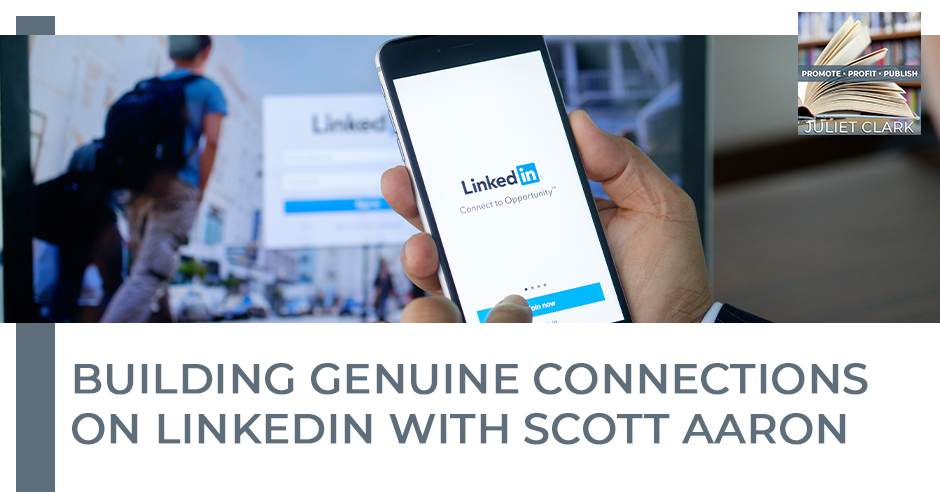
In the age of social media saturation, genuine relationships, especially as it relates to business, have become increasingly sparse. But establishing authentic human connections on social media should be and isn’t something that you neglect, especially if the business you’re building thrives in the online sphere. Scott Aaron is an acclaimed network marketer, author, podcaster, and speaker who specializes in LinkedIn Leads Generation. He sits down with Juliet Clark to talk about the infinite opportunities you have to create strong bonds through social media if you play your cards right. Don’t get stuck creating and posting fake content on your social media channels. Focus instead on the kind of networking wherein you build authentic connections.
—
Watch the episode here
Listen to the podcast here
Building Genuine Connections On LinkedIn With Scott Aaron
Our guest is Scott Aaron. He is an internationally acclaimed and award-winning network marketer, author, podcaster and speaker. He’s the go-to specialist when it comes to converting traffic, establishing connections, creating residual income using LinkedIn leads generation and building personal brands. He is people-focused and results-driven. You all know me. You can tell we got along well when we talked because we’ve got the same mission here. He’s great at teaching others how to create wealth from online in organic traffic, which is a game-changer because the digital world is saturated. All of the consumers, they’re exhausted by us. Welcome, Scott.
Juliet, thank you so much for having me here. We connected through LinkedIn of all places and I’m grateful to be here and to share what I know with your audience.
Let’s talk a little bit about the saturation in the digital world and the exhaustion that everybody’s feeling online.
It’s bad. It’s something that I’ve been taking notice of little by little over the last years. I would say it’s been compounding more. I don’t see it getting any less saturated. I see it getting more saturated. We’re living in this digital world where people are addicted to creating a course and selling it to people. “Let me make this funnel. Let me start this opt-in. Let me do this email sequence. Let me find some hack or way to create more sales.” I’ve been in the human connection business my entire life going back to when I was a personal trainer, a gym owner and sports nutritionist in the late ‘90s. For eighteen years, that’s what I did. I spent time with people and they can think what they want. You can listen to the experts and they will tell you that there is a huge shift going on.
Some of the old methodologies, which are talking to other human beings either over phone or in-person, is coming back around. People are sick and tired of being sold to and pitched because that’s all people are doing. This is what Les Brown says, “The person that takes the easiest road will end up living and creating the hardest life possible. Those that take the hardest road will create and live the easiest, most fruitful and abundant life possible.” I’ve always been willing to take the hardest way possible even when I teach my clients. It is from the ground up.
In creating genuine relationships, there is no automation. Share on XThere is no automation. It is all by him creating relationships that are focused around trust and rapport. It’s creating that synergistic relationship between two people that don’t know each other, but at the end of the call, at the end of the Zoom, they have found connecting points. When you ask questions, you’re going to get answers. The more questions that you ask, the more relatability you’re going to have between that person who you didn’t know ten minutes before. They quickly become a friend and acquaintance, someone that you can create or collaborate with.
I was in a Facebook group and one of the women in it said, “I’m tired of seeing Facebook ads.” It’s the same people, the same instant gratification message. How do I mute them? What I find interesting as you were talking about this shift and yet Facebook made some changes to its algorithm that are leading back to ads, which people are already saying they’re hating. How did Facebook miss this?
Facebook didn’t miss it. If anyone goes to AdEspresso.com, it is the blog site attached to Hootsuite that reports on all the algorithm changes on Twitter, LinkedIn, Facebook and Instagram. It’s a monthly newsletter and they tell you everything. What Facebook has done is exactly what they’ve wanted to do, which is to devalue the content that people are organically posting that are using it for business purposes on a personal page and pushing that stuff way down the news feed and they’re pushing up all of the personal stuff, all the pregnancy announcements, all the birth announcements, the engagements, the weddings.
Unfortunately, tragedies are shown a lot on Facebook because it’s a personal platform. What people don’t realize is Facebook earns, profits between $2 billion and $3 billion a year from the Facebook business pages and that is people that are boosting ads and running ad campaigns. It’s a whole separate business. Organically, Facebook noticed that people didn’t want to be sold to. They said, “We’re going to change this whole thing around and we’re going to have this one platform break off into two different sectors.” The sector of the people that are using it for personal purposes, the barbecue of social media, which it is, then we’re going to have the sector of sponsored ads. The people that are on there for business purposes, trying to use it for personal reasons. They start to see those that are selling products. They can start buying their stuff.
No one wakes up in the morning and says, “I’m going to log on to Facebook and Instagram because I’m going to buy something.” That’s not why people wake up to go on social media. If they want to buy something, unfortunately or fortunately, they’re going to go to Amazon or eBay or wherever they’re buying it. Why people are seeing many ads is because the person that’s seeing the ad, their activity is tracked by who’s running the ad. An example, I have some ads out there that are not selling anything. I have an ad running that takes people to a free download that I offer everybody. It’s helping people with their profiles on LinkedIn.

Building Genuine Connections: We’re living in this digital world where people are addicted to creating a course and selling it to people.
The people that end up seeing that are the people that are most likely to engage with that content, network marketers and business coaches. The only reason why that person reading this is saying, “I keep seeing all these ads for this business coach and that business coach and this funnel hack.” It’s because your activity has been tracked through a pixel that is on your profile on Instagram and Facebook. What it’s going to do is it tells that person that has the business page, “Here’s who you should market back to because they’re most likely ‘going to buy or opt-in.’” It’s all an algorithm. It’s all off of activity of what you are doing outside and inside of the planet.
I get that, but the reason I’m saying this and we found workarounds to not doing the ads because the ads have had such poor targeting in the past when we’ve tested. Me and one of my partners the people who were clicking were not our ideal audience, even though we’d put it in. We stopped it all. Here’s what they’re saying inside of that group, “I’m tired of seeing the ads. I may have done something in the past that indicated I wanted that ad, but I don’t want to see them anymore. I’m not interested. I’m tired of them. It’s saturated.” It’s interesting in the shift that they’re going back to ads when people are truly saying, “We’re over the coaching industry and I don’t want to see them anymore.”
Here’s the easiest piece of advice on how to stop that. Get off the platform. That’s why I pivoted onto LinkedIn because I didn’t want to see that stuff anymore. Instagram is even worse. You want to talk about lowest on the totem pole for social media as far as where the social ego is the highest and the content is the fakest, hands down Instagram is the worst.
I’m not even on Instagram and Twitter. Instagram is not so bad. Twitter is toxic and that’s why I got off there.
Twitter is the running news. It’s the TMZ of social media, so to speak.
Instagram is where the social ego is the highest and content is the fakest. Share on XIt didn’t use to be like that though. When authors first started using it back in 2008, 2009, it was a great platform. Now, it’s toxic fighting and it’s not news. You can’t do news in 140 characters. LinkedIn, I agree. I’ve switched over there as well. I do most of my prospecting over there. That’s how I found you. I have certain things I look for but even then, I want to talk about it a little bit because it’s not salesy. Nothing bothers me more than getting that thing saying, “Here, let’s connect,” then you get hit with a sales pitch.
I teach human connection and I teach LinkedIn to entrepreneurs and business coaches, how to build your audience genuinely and how to get qualified leads and people to collaborate with. This guy sends me a connection request and in the connection request, you can add a note or not add a note. A little productivity hack for you and your readers, LinkedIn says, “Add a note to have a greater opportunity of someone accepting your connection.” That’s false. There was a third party that came in that did a study comparing, sending about 500 connections with a note and 500 connections without a note. The acceptance rate was almost the same. Don’t create any work for yourself. That’s what I have to say about that. This guy sent me a note and he’s like, “Scott, I’m not trying to sell you anything, I just wanted to connect.” I’m going to test the waters a little bit here, so I accepted the connection. A day later, guess what happened?
He sold you.
I got a six-paragraph verbal vomit sales pitch trying to get me to, “Opt in and click on this link, watch this video and schedule a call here.: I removed them as a connection because human beings don’t like being sold to. When you became friends with someone in the sandbox, did you try to pitch them to be your friend? Did you sit down next to them and you started making a sandcastle together and started sharing stories and you’ve found commonalities and before you know it your friends? You need to treat social media. You need to treat LinkedIn like dating, not a one-night stand. Most people are treating it like a one-night stand. How meaningful is that relationship going to be? If you want to play by the numbers, you are more likely to have a greater connection and relationship with someone that you’ve taken the time to get to know, to find areas of interest that you share, commonalities, a foundation and an infrastructure for a real true, meaningful relationship.
If you think about dating, what’s that first date like? You get on the phone or you’re in person with that person and what do you do? You start asking questions. Where are you from? Where did you grow up? What’s your favorite movie? What’s your favorite color? You start learning about each other. “One of my favorite movies was someone that was in this one.” You start finding out all of this groundwork that makes for a truly meaningful relationship. If you’ve had that initial call, that initial first date, if it was impactful, that person’s going to say, “I enjoyed myself. I would love to see you again. Can we go out again?” That person would say, “Of course, this was great. Let’s go out a second time.” You go out a second time, then there’s already familiarity there because you remember the person. You start talking about things that you talked about last time and the relationship builds. If more people took the time to get to know people, care about them, put their best foot forward and say, “I’m not going to try to sell this person anything. I’m not trying going to try to pitch them.”
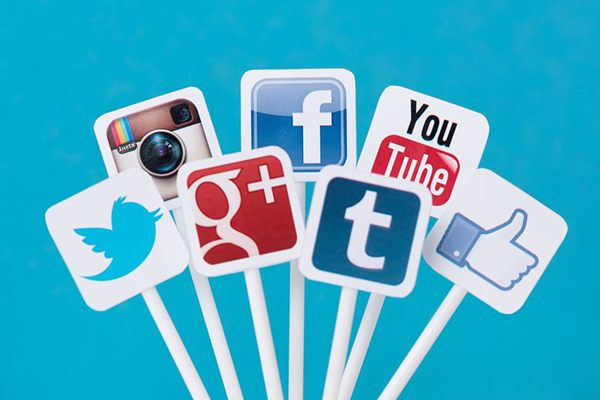
Building Genuine Connections: Whether you use Facebook, Instagram, Twitter, YouTube, or LinkedIn, treat it like dating. Get to know the audience you’re reaching.
You can sell someone without selling them. When you add value to their lives, when you leave them better without expecting anything back in return, the more that you give, the more you’re going to get. If people started treating, I don’t care what platform you use. You can use Facebook, Instagram, Twitter, LinkedIn, YouTube, whatever, treat it like dating. Get to know your audience, those people. Educate, inform, take a genuine interest in those people because they’re going to bring that right back to you. If they don’t, it wasn’t meant to be. There are plenty of fish out there. You go and you meet someone else. Before you know it, you’ve built this tribe and you’ve created this tribe of it could be raging fans or consumers and customers or a great network of people that you can network with.
I use a dating analogy too, but this is what most people do. Scott and I go out on our first date, 30 minutes in, he tells me he loves me, “Let’s get married.” I can tell you, I’ve got my phone out, the Uber is ordered, I’m in the bathroom and I’ve got the MacGyver kit out of my purse, looking how to disengage the emergency lock on the back door to run. That’s what you’re doing to people when you do the selling right out the gate. Thank you, Scott, for not engaging me that way. Many people do not treat it that way. I had who was trying to sell me a texting service. I’m like, “Thank you, I have one.” She comes back, “Does it have this and this?” Go away. No means no. How do we navigate this world of getting out of this pitch slapping? You described the relationship building. One thing that always surprises me, I met you because I was looking for pod swaps. I meet a ton of people every day doing that and I’m always surprised by the breadth of the podcast out there and chatting with people about, “Why chocolate?” How do you get out there and talk to a big number of people out there?
Number one, for the person that wants to spread themselves out and you want to have a greater impact, you have to define what you’re looking for and what you want. What I teach my clients and what I speak about all the time on social media is thinking about the end in mind. What would you like the end result to be? You hear the analogies, focus on what’s in front of you, not what’s in back of you. You need to focus on what you would like to achieve. Is your goal to get on five pod swaps a week? Is your goal to grow your network by X amount of many people or whatever it is? When there is the specific intention behind everything that you’re doing, you’re going to take the action to support that intention.
The only reason why people aren’t achieving the things they want to achieve whether it’s pod swapping like you and I are doing or growing their business and their brand is because they’re not taking the action, the cure-all for being stuck. The cure-all for not having the income that you want or not being where you want to be in your life, whatever it is taking action. You can’t sit in a chair and wait for the skies to open up and have things drop into your lap. You have to work for them a little bit, whether that’s reaching out to people. Here’s the misconception. People think that reaching out to people cold on LinkedIn is spammy. There are two trains of thought.
Number one, I would agree if it’s done in the way that I described where you’re sending someone six paragraphs where you’re pitching or the way that we connected. I sent Juliet a message saying, “I love what you’re doing on the platform. I see you also have a podcast. I would love to get on a call to learn more about each other and see if we can support each other.” That was it. She could’ve said no or she could’ve said yes. She said, “Yes.” We got on a call and we vibed. We have lots of commonalities and in our beliefs in what we’re doing. You keep forming those connections and you see where it goes. You keep moving forward.
Yes is the destination. No is how you get there. Share on X
One of the best books that I ever read was a book called Go for No! and it’s by Andrea Waltz and Richard Fenton, husband and wife. Andrea has become a good friend of mine. It’s the number one selling sales book of all time. It’s a phenomenal book. Seventy-six pages, you can read it in a day. When I read this book and right on the cover, it says, “Yes is the destination. No is how you get there.” Reading that, I was like, “That’s it. Everyone is going for the yeses, but you have to go for the noes because the noes opened the doors to the yeses.” They also talk about the failure quotient. This is another big thing. People don’t want to fail. If they fail, they feel disappointed. If they feel disappointed, they want to quit. They want to give up. The fact is the successful people that we’re all looking at, wherever it is, those people have also failed more than they have succeeded because their failures will open the doors to your successes.
When you show up on whatever platform you want to, it shouldn’t be with the intention to try to get someone, to sell or pitch. You have to sit down. I’ve done this multiple times and I do it every year. What do you want out of your business? What do you want it to become? What do you want to create? More importantly, how do you want it to serve other people? We create these businesses to solve problems for all the things that people are going through. For me, I know what I provide, the service that I do, the service that I teach. It’s helping people that have a growing problem. I’ve created a solution to that problem. For anyone that’s reading this, sit down within yourself and write down the problem that you’re solving. When you know the problem that you’re solving for others, it’s going to make the way that you connect. It’s going to make the way that you show up. It’s going to make the way that you interact with others the most genuine and authentic way you can do it because you’re showing up as you with not the intention to sell but to impact other people. You have to have an impact before you can create a great influence.
I want to address that spamming because that’s an objection that we used to not have to do it. When my coach had me do what I’m doing over on LinkedIn, that was my thing. I know how I react when people send these messages out to me. Seventy-five messages that first day, one guy came back and he was a jerk. What did I do with that one guy? I made it all about him, “See? I told you so.” I went back to my coach and my coach was like, “One guy out of 75. There were other 74 that were somewhat successful.” That’s all it took to say, “There are going to be some people out there who jerks. You don’t know what day they’re having, but look at all those people that you’ve done since.” Don’t use that as a reason not to do it. If you get some jerks, maybe you need to reformat that message a little bit, but don’t stop. When you said intentional, how long every day do people have to intentionally put aside to work this, get those leads and not let other things get in a way? We all hate to prospect.
If you hate the prospect, then you hate to build the business. I love prospects. If you hate the prospect, I’m sorry you’re not cut out for entrepreneurship because people are not going to come to you. I don’t care how successful you are, how amazing your product is, people aren’t waking up and like, “I’m going to reach out to Juliet and I’m going to give her $12,000 to work with her.” I’m sorry. In a perfect world, that would be amazing. You have to do the legwork. Prospecting to me is not prospecting. Prospecting to me is connecting. It’s talking to someone and seeing if there is a void in their business or if there is a pain point in their business. This is what I do. If someone is are interested in learning to work with me, I’ll say to the person, “Juliet, what is something that you are seeking to improve immediately? What is your biggest want right now? What do you want to improve?” They’ll tell me what their biggest need or want is, “I need more sales, more clients.” I’m like, “Okay.”
Now that I’ve asked the question, I can bridge the gap between my answer and their question. The good thing is what I teach people is how to fill those voids of not having phone calls, which prevents you from not having clients and not having sales. The more that you ask, the more that you’re going to get. There’s a simple analogy. You have to ask in order to get. When you’re speaking to people, you don’t have to prospect them. You have to ask questions because the more questions you ask, the more information you’re going to get back from that person. You can see, is this person a good fit for what I can provide them? Is this going to be a great conversation where we can do a collaborative effort on something or create something together or maybe provide referrals for each other?

Building Genuine Connections: When there is a specific intention behind everything you’re doing, you’re going to take action in order to support that intention.
You need to block off as much or as little time as you want. This is my number and what I read about in blogs all the time, if you’re not having at least twenty discovery calls per week in the market, you don’t have a shot. I speak between 4 and 5 discovery calls a day. That’s my number. With LinkedIn, I teach something similar where you reach out to people and I keep it at a smaller number between 10 to 15 people. Every 10 to 15 messages that I send, I will get 4 to 5 responses back from the people that I’m connecting with. When you are super intentional with the type of person that you’re allowing into your network, it’s almost a guarantee they’re going to accept a message from you because they’re going to see a similarity between you and them. Why wouldn’t they want to talk with you? Unless they’re not active on LinkedIn. They don’t like having discovery calls because it’s “a waste of their time.”
I had a discovery call that led to a pod swap, which is great because it’s free advertising for people and people don’t realize the power of that. More so, he asked me a question. He said, “Why do you think people are not liking or not liking you to get on a call?” I said, “They don’t understand the value of time.” He said, “What do you mean?” I said, “For me, if I reach out to someone and they write back, ‘Sure, I’d love to talk.’ The respect level I have for that person goes through the roof because the most valuable commodity any human being has is their time.” We all get 24 hours in a day and we all get to choose how we spend it. If someone that I seek to connect with is giving up 20 to 30 minutes of their day to talk to me, they’re going to get the best of me, whether they’re going to be exchanging anything, whether it’s money, time or energy. If someone is willing to get on the phone with me, they have my utmost respect, whether there is a synergistic connection or not when I get on the phone with them, because that is the most valuable commodity we have.
Money is a thing that was created and we all put all of this value around it. Another analogy I live by is that everyone cares much about money, but does money care about you? Is money sitting there thinking like, “What’s wrong with Juliet? What’s their problem?” It’s doesn’t work that way. The more that you give, the more that you get. If someone is going to be open and willing, that is such a victory. If you reach out to someone and they reached back and said, “I would love to talk. Let’s hop on a Zoom. Let’s hop on a call,” that is such a victory you have no idea because you’re opening up a door of opportunity that was closed for however long it had been since you reached out to the person. Every door of opportunity you opened, that you walk through, you don’t know what’s going to lie on those great things. The more opportunity that you’re going to step into, the more amazing things can come into your life and your business.
I was invited to come on a group coaching program and I loved it that the guy who ran the group was willing to take our quiz. In front of his students, he had me evaluate him. Exactly what you were talking about came up. I said, “How many discovery calls are you having a week?” He said, “Sometimes none. Sometimes 2 or 3.” He had a small coaching program and I took between what I was doing on LinkedIn, the quiz and I’ve given talks. I laid out my calendar and showed the people on the call my calendar. I was like, “This is what it has to look like.” I typically do between probably 15 and 20 a week and they’re not all sales calls. I want to make that clear what Scott said. Some of them are pod swaps. Some of them are, “I want to know more about your products.” Some of them are referrals but all over the place, you have to be making time for those types of conversations because they’re what we call income-producing conversations. If you’re not having those in your business, your business isn’t growing.
To give you an idea, I had a discovery call at 10:30. At 12:30, I did a pod swap. At 2:00, I had a discovery call that led to a pod swap at 3:30. We’re doing our pod swap and I have another discovery call at 7:00 and then I will have a couple of calls. Pod swap, discovery call, keynote downtown, discovery call, that’s how you network. People don’t understand entrepreneurship is what you make of it. It is one of the most fruitful things that you can step into. It could also be one of the most frustrating things that you step into because people truly don’t understand how hard you need to work when you’re building your own business and your brand because it’s yours. That’s the exciting thing. Whatever you want your business to become, whatever income you choose to want to make, it’s up to you. Gary Vaynerchuk says, “Your net worth is in direct correlation to your network.” If your net worth is small, there’s a good chance you have a small network. If you start growing your network, you will automatically grow your net worth if you are willing to network the right way and form those connections and relationships the way that human beings should.
Your net worth is in direct correlation to your network. Share on XThe takeaway has been, what if you replace prospecting with connecting? Would that make it easier for you to get out there and do it? I know you all avoid this. It’s a plague. I have some of you tell me, “You have the cleanest houses on the planet because you work from home and you will do anything to avoid prospecting. You’ll even clean the house.” Scott, do you have something you’d like to give away or how can people get a hold of you if they want to know more?
I have a free download on my website. If anyone goes to ScottAaron.net, there’s a ton of free resources there. My podcast is there. Access that where you can get my bestselling book, a free fifteen-minute discovery call and a free download. I’m on all social media. On Instagram, it’s @ScottAaronLinkedIn. I do have a YouTube channel, Scott Aaron, and also Facebook. LinkedIn is also Scott Aaron.
Thank you so much for being on.
Thank you, Juliet. I appreciate the opportunity and you.
Important Links
- Scott Aaron
- AdEspresso.com
- Go for No!
- ScottAaron.net
- @ScottAaronLinkedIn on Instagram
- Scott Aaron – YouTube
- Scott Aaron – LinkedIn
About Scott Aaron
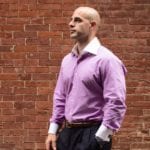 Internationally acclaimed and award-winning network marketer, author, podcaster and speaker, Scott Aaron, is the go-to specialist when it comes to converting traffic, establishing connections, creating residual income using LinkedIn Leads Generation and building personal brands.
Internationally acclaimed and award-winning network marketer, author, podcaster and speaker, Scott Aaron, is the go-to specialist when it comes to converting traffic, establishing connections, creating residual income using LinkedIn Leads Generation and building personal brands.
People-focused and results-driven, Scott’s strategic approach to teaching others how to create wealth online and organic traffic is the game changer when it comes to competing in a saturated digital world.
Love the show? Subscribe, rate, review, and share!

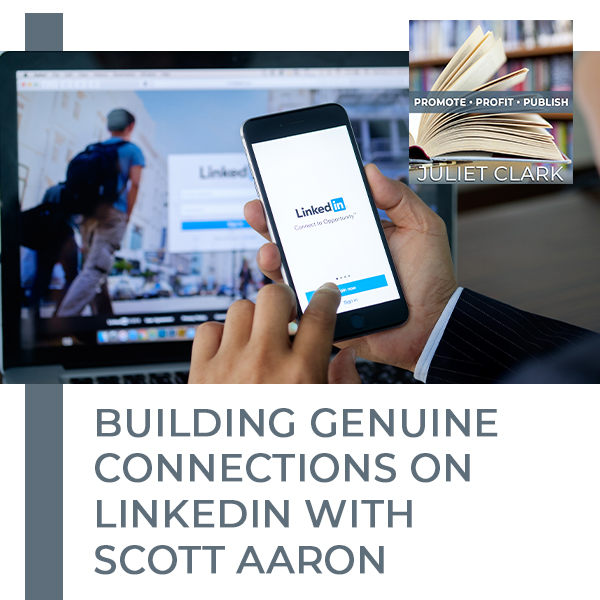


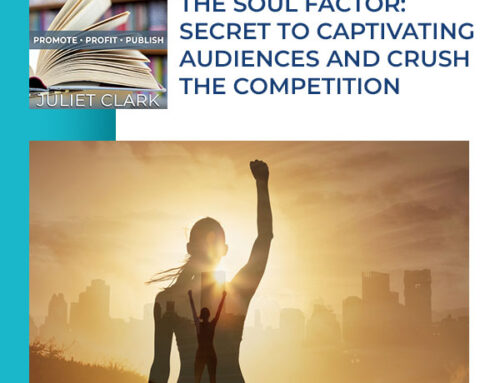
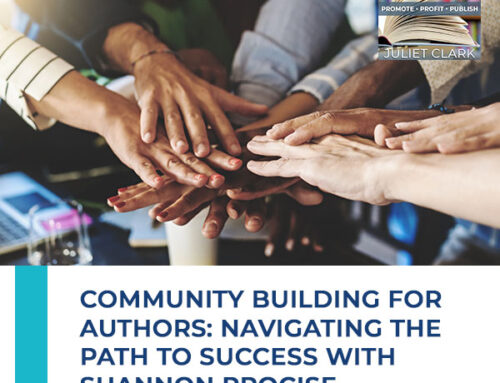
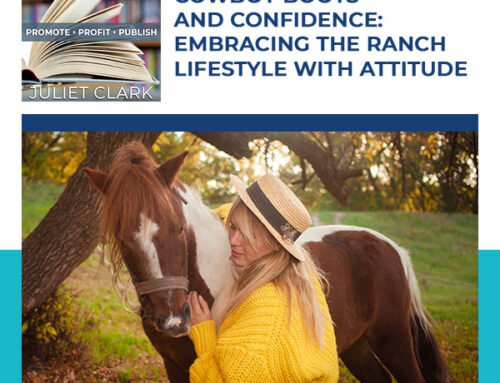


Leave A Comment